Table of Contents
ToggleTaj Mahal, Agra: The Eternal Symbol of Love

Introduction to the Taj Mahal
The Taj Mahal Agra is one of the most iconic monuments in the world. Built by the Mughal Emperor Shah Jahan in memory of his beloved wife Mumtaz Mahal, the monument stands as a symbol of eternal love. Located on the banks of the Yamuna River in Agra, Uttar Pradesh, the Taj Mahal attracts millions of visitors each year from across the globe.
The Love Story Behind the Monument
The Taj Mahal was commissioned in 1631 after the death of Mumtaz Mahal during childbirth. Grief-stricken, Shah Jahan envisioned a majestic tomb that would stand forever as a tribute to their love. This stunning white marble mausoleum took over 20 years to complete and became a UNESCO World Heritage Site in 1983.
Architectural Brilliance of the Taj Mahal
The Taj Mahal Agra is a masterpiece of Mughal architecture, blending Persian, Islamic, and Indian styles. It features a symmetrical layout, exquisite marble inlay work, and a massive dome that changes color based on the light of the day. The four minarets surrounding the main structure add to its grandeur while enhancing its visual symmetry.
The Love Story Behind the Monument
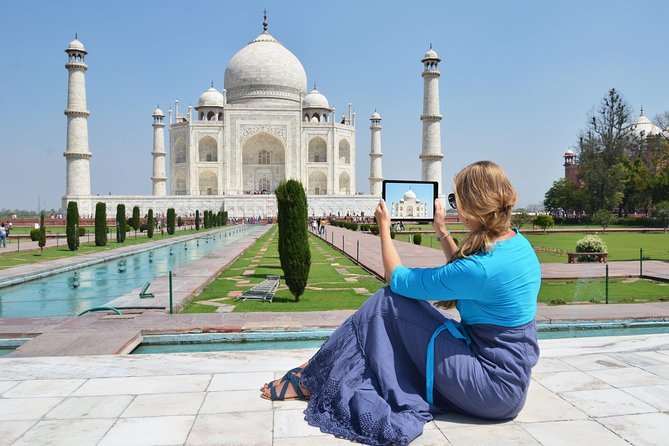
The Love Story Behind the Monument
The Taj Mahal is more than just a remarkable example of Mughal architecture; it is a symbol of eternal love that has captured hearts for centuries. At the core of this stunning creation lies a deep and poignant love story between Emperor Shah Jahan and his wife, Mumtaz Mahal.
Mumtaz Mahal, originally named Arjumand Banu Begum, was the emperor’s trusted companion and his favorite wife. She accompanied him even on military campaigns, and their relationship was filled with affection, mutual respect, and emotional closeness. In 1631, during the birth of their 14th child, Mumtaz passed away. Her death devastated Shah Jahan, plunging him into profound grief.
To honor her memory and immortalize their love, Shah Jahan envisioned a monument unlike any the world had seen before. He ordered the construction of the Taj Mahal in Agra, a project that would take over 20 years to complete. More than 20,000 artisans and workers from across the empire were brought together to create what would become one of the most admired buildings in the world.
The white marble mausoleum, delicately inlaid with semi-precious stones, Quranic verses, and intricate floral motifs, reflects the emperor’s deep sorrow and admiration. Every corner of the Taj Mahal exudes a sense of devotion, and its symmetrical design is said to represent harmony and balance — qualities believed to exist in their relationship.
The central tomb chamber, where Mumtaz Mahal rests, is aligned directly under the grand dome. Later, Shah Jahan was buried beside her, uniting them for eternity within the walls of the Taj Mahal. The very existence of this monument continues to narrate the tale of a love that defied time and mortality.
Visitors from all over the world are drawn not only to the architectural beauty but also to the emotional resonance of this historical love story. The Taj Mahal stands as a timeless reminder that true love can inspire greatness, even in the face of immense personal loss.
Even today, as couples walk through its grand gates and gaze upon its marble facade, the legacy of Shah Jahan and Mumtaz Mahal lives on. The Taj Mahal remains a powerful testament to the enduring bond between two souls and the extraordinary monument that love built.
Architectural Brilliance of the Taj Mahal
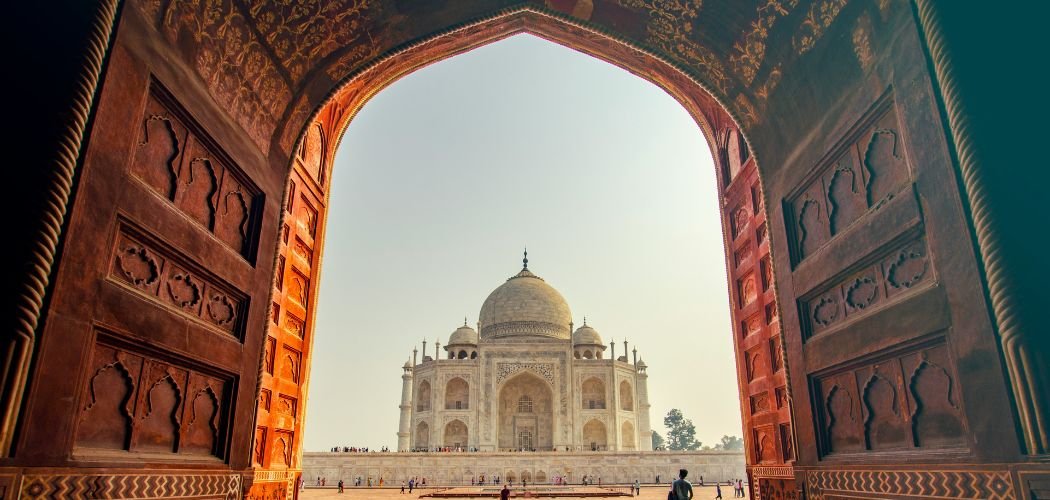
Architectural Brilliance of the Taj Mahal
The Taj Mahal is celebrated not only as a symbol of eternal love but also as one of the finest examples of Mughal architecture ever created. Combining elements of Persian, Islamic, Turkish, and Indian design, it stands as a testament to the creativity, vision, and craftsmanship of the 17th century. Built entirely out of white marble, the monument reflects the high point of Mughal architectural refinement under Emperor Shah Jahan’s reign.
One of the most striking aspects of the structure is its perfect symmetry. The central dome, rising approximately 73 meters high, is flanked by four slender minarets placed at the corners of the main platform. These minarets are slightly tilted outward—a subtle yet brilliant engineering technique designed to prevent them from collapsing onto the main structure in case of an earthquake.
The entire layout follows a traditional Charbagh, or four-part garden design, inspired by Persian landscaping ideals. The geometrical precision of the water channels, pathways, and green spaces reflects harmony and order, leading the visitor’s gaze toward the main mausoleum. At sunrise, sunset, and under moonlight, the marble changes hues—from soft pinks and golds to cool blues and silvers—creating a surreal experience for the observer.
The inlay work on the Taj Mahal is another marvel. Known as Pietra Dura, this technique involves embedding semi-precious stones like jade, onyx, amethyst, lapis lazuli, and turquoise into the marble surface to form intricate floral patterns. This decorative art is visible throughout the monument, particularly on the inner walls of the central tomb chamber, where the craftsmanship reaches its peak.
Calligraphy is another key element of the architectural design. Verses from the Quran are inscribed in black marble around the archways and on panels. The letters are precisely sized to appear uniformly proportionate when viewed from ground level, showcasing the clever visual planning used by the artisans.
The use of white Makrana marble also adds to the monument’s brilliance. Not only is it durable, but its fine quality allows for light to pass through, adding a luminous quality to the structure. This play of light—both natural and architectural—enhances the monument’s ethereal appearance.
The Taj Mahal is more than just a building; it is an experience crafted through geometry, symmetry, and the highest levels of aesthetic sensibility. Its design continues to inspire architects and artists around the world, making it an undying symbol of beauty and brilliance.
Best Time to Visit the Taj Mahal
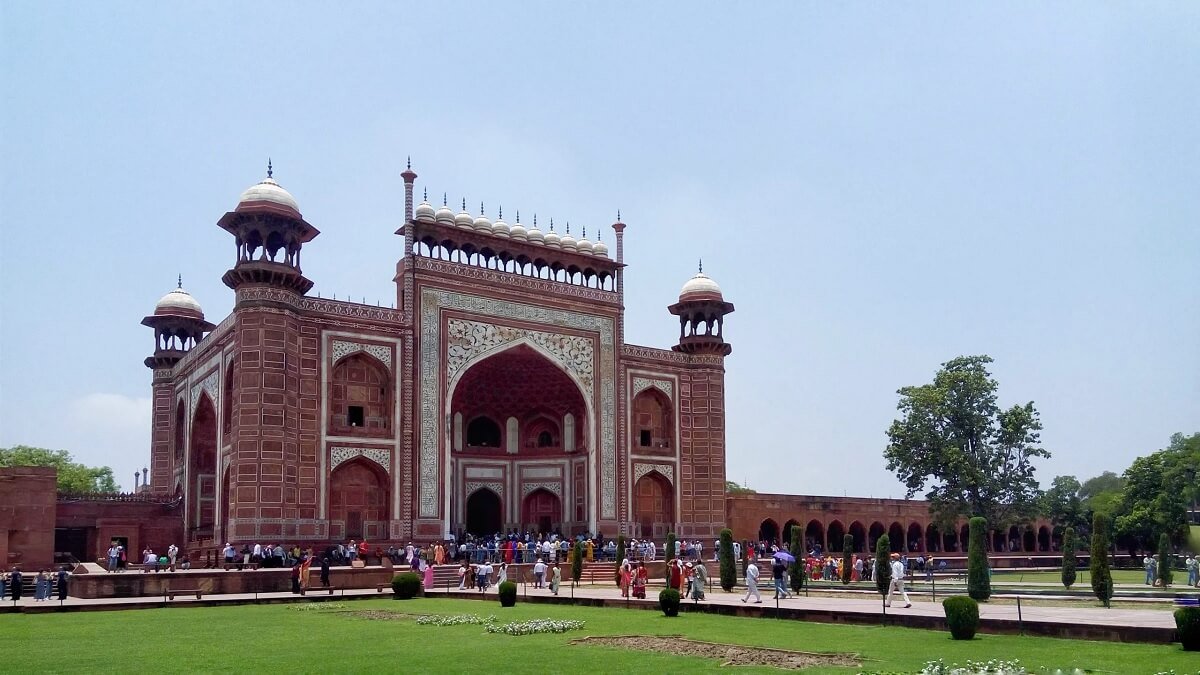
Best Time to Visit the Taj Mahal
Visiting the Taj Mahal is a dream experience for many, but timing your trip right can make all the difference. The monument’s beauty shifts with the seasons, times of day, and even the phases of the moon—offering a different perspective with every visit.
Ideal Season: October to March
The most recommended time to visit the Taj Mahal is from October to March. During these months, the weather in Agra is pleasant and cool, making it ideal for sightseeing and photography. Winter mornings often add a layer of soft mist over the marble dome, creating a romantic and ethereal setting. This period also avoids the scorching summer heat, which can be uncomfortable for walking around the large complex.
Best Time of Day: Early Morning or Late Afternoon
Early mornings, right after sunrise, are considered the best time of day to visit. The soft golden light gently illuminates the white marble, and the crowd is usually minimal, allowing for a peaceful and uninterrupted experience. Late afternoons are also great, especially for those wanting to capture the monument as the sun sets in the background.
Special Viewing: Full Moon Nights
A unique way to experience the Taj Mahal is during full moon nights. On five nights each month—two days before, the day of, and two days after the full moon the monument is open for night viewing. The marble glows under the moonlight, offering a rare and magical sight that leaves visitors awestruck.
Monsoon Season (July to September): Caution Advised
While the monsoon season brings lush greenery to the gardens, heavy rains and humidity can limit visibility and comfort. It’s best to avoid this time if you want clear skies and vibrant photos.
Best Time to Visit the Taj Mahal
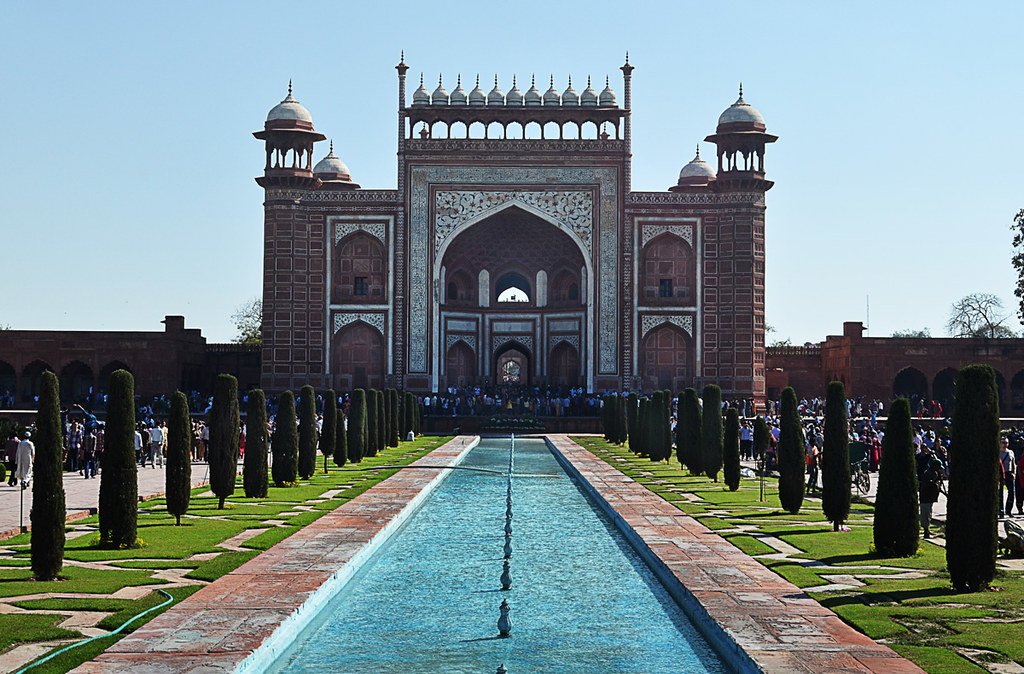
Entry Fee and Visiting Hours
The Taj Mahal is open to visitors six days a week, from sunrise to sunset, with the exception of Fridays, when it remains closed for general visitors due to congregational prayers at the mosque.
Visiting Hours
Open: Sunrise (approx. 6:00 AM)
Close: Sunset (approx. 6:30 PM)
Closed: Every Friday (only Muslims are allowed inside for prayers)
Entry Fees (as of latest update):
Indian Citizens: ₹50
Foreign Tourists: ₹1100
SAARC/BIMSTEC Nationals: ₹540
Children (below 15 years): Free
Optional ticket for main mausoleum: ₹200 extra (for all categories)
Tickets can be booked online to avoid long queues, and visitors are advised to carry a valid ID proof while entering.
Night Viewing
Night viewing is allowed on five nights a month — the full moon night, two days before, and two days after. The timings are from 8:30 PM to 12:30 AM in 8 batches of 50 people each (30 minutes per batch).
Planning your visit with this information can help you enjoy a smooth and memorable experience at the Taj Mahal.
How to Reach Agra

How to Reach Agra
Agra, home to the iconic Taj Mahal, is well-connected to major cities in India by air, rail, and road. Whether you’re coming from Delhi, Jaipur, or any part of the country, reaching Agra is convenient and accessible.
By Air
The nearest airport is Pandit Deen Dayal Upadhyay Airport (Agra Airport), located around 13 km from the city center. It currently operates limited domestic flights. For international travelers, the nearest major airport is Indira Gandhi International Airport in Delhi (approx. 220 km away). From Delhi, you can take a taxi, train, or bus to Agra.
By Train
Agra is a major railway hub with several stations, the most important being Agra Cantt. High-speed trains like the Gatimaan Express, Shatabdi Express, and Rajdhani Express connect Agra to Delhi, Jaipur, Mumbai, and other major cities. The train journey from Delhi takes about 1.5 to 2 hours.
By Road
Agra is well-connected by a network of national highways. The Yamuna Expressway provides a smooth and fast connection from Delhi, taking around 3–4 hours by car or bus. Several government and private buses also operate daily between Agra and nearby cities.
No matter which route you choose, reaching the Taj Mahal in Agra is simple, making it an ideal destination for both domestic and international travelers
Nearby Attractions in Agra
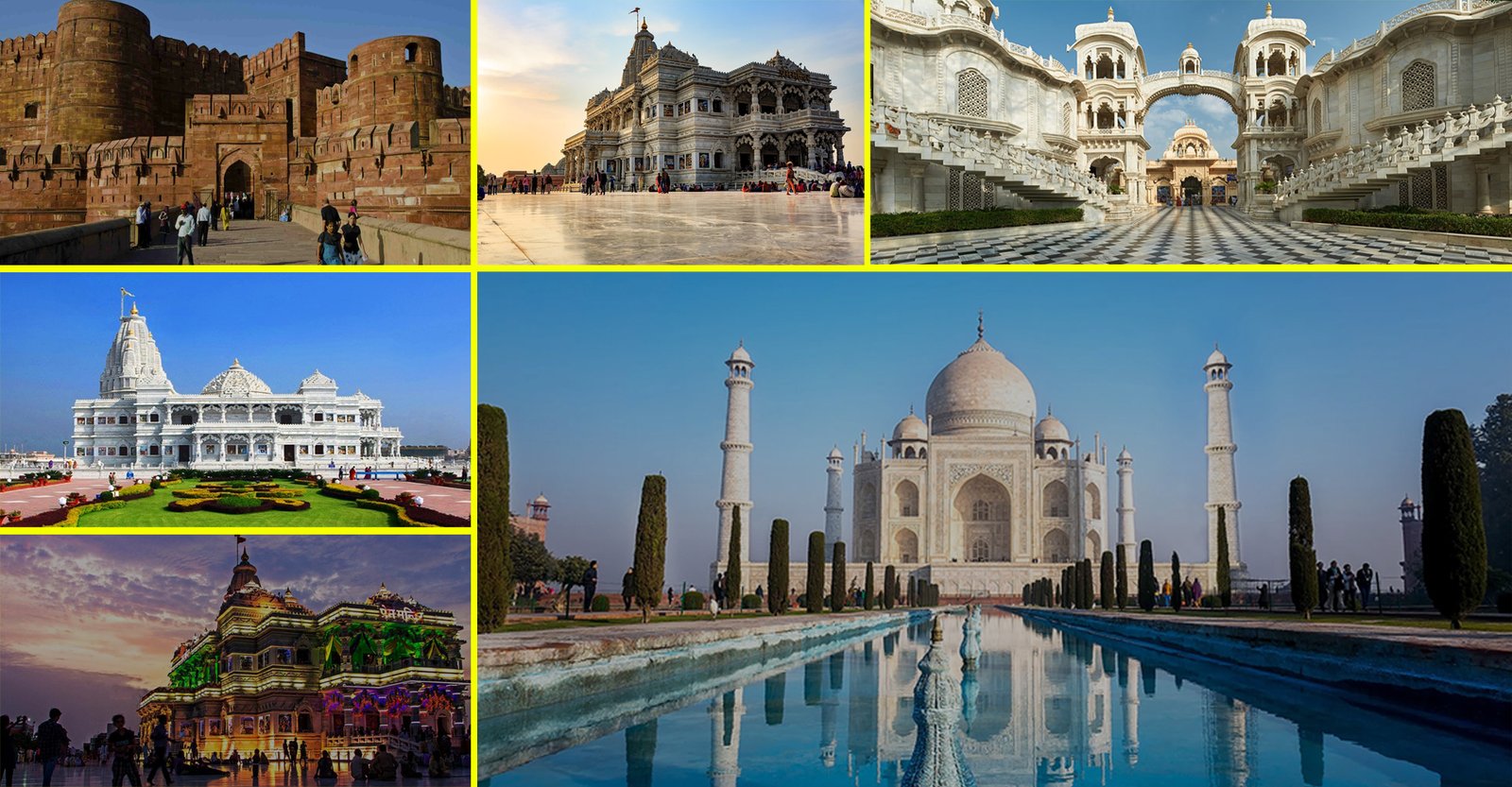
Nearby Attractions in Agra
While the Taj Mahal is undoubtedly the crown jewel of Agra, the city is rich in history and offers several other must-visit attractions that complement your experience.
Agra Fort
Just 2.5 km from the Taj Mahal, the Agra Fort is a UNESCO World Heritage Site and a powerful example of Mughal military architecture. This red sandstone fortress served as the main residence of the Mughal emperors before the capital was moved to Delhi. Highlights include the Jahangir Palace, Diwan-i-Am, and Musamman Burj, where Shah Jahan was imprisoned in his final years.
Itmad-ud-Daulah’s Tomb (Baby Taj)
Often called the “Baby Taj,” this exquisite tomb was built by Nur Jahan for her father. It’s considered a draft version of the Taj Mahal, with delicate marble inlay work and peaceful surroundings, making it a hidden gem worth exploring.
Mehtab Bagh
Located directly across the Yamuna River from the Taj Mahal, Mehtab Bagh offers a stunning view of the monument, especially at sunset. It’s a great spot for photography and a quieter place to relax.
Fatehpur Sikri
About 40 km from Agra, this historical city was once the capital of the Mughal Empire under Akbar. The grand palaces, mosques, and courtyards make it a UNESCO World Heritage Site and a rewarding day trip.
Akbar’s Tomb (Sikandra)
Located 10 km from the city center, this is the final resting place of Emperor Akbar. The tomb complex blends Hindu, Islamic, and Christian motifs, showcasing the emperor’s philosophy of tolerance.
Agra is more than just the Taj Mahal—it’s a gateway to Mughal grandeur and India’s royal past.
Travel Tips for First-Time Visitors
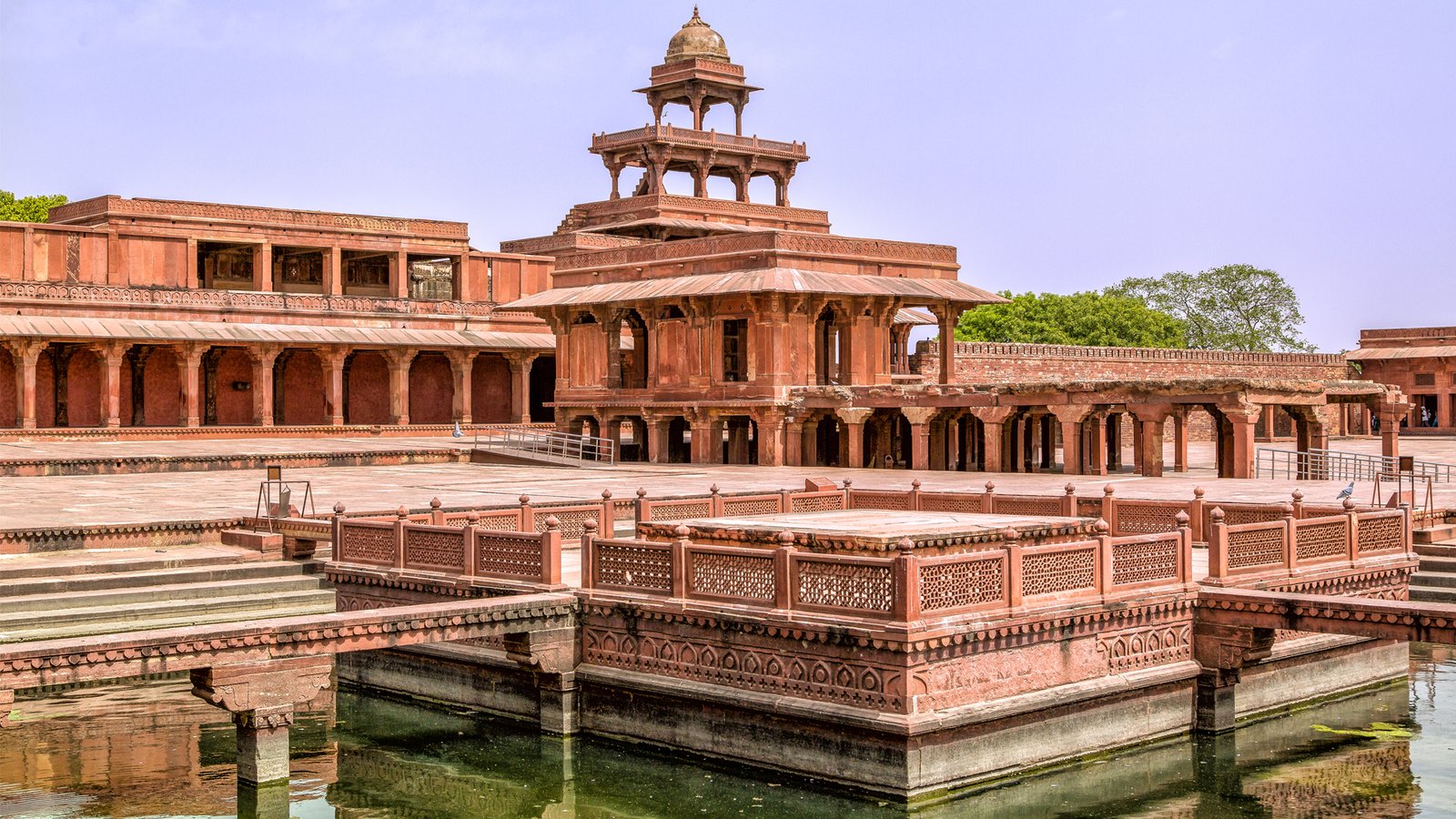
Travel Tips for First-Time Visitors
Wear comfortable footwear for walking.
Don’t forget to carry a water bottle and sunscreen.
Professional photography gear may require permission.
Avoid Fridays — the monument is closed for prayer.
Book online tickets in advance to skip queues.
Final Thoughts
The Taj Mahal Agra is not just a monument, but a timeless representation of love, devotion, and architectural brilliance. Whether you’re a history enthusiast, a romantic at heart, or a curious traveler, this iconic wonder of the world promises an unforgettable experience.
FAQs
Q1. Is the Taj Mahal open every day?
No, it is closed every Friday for general visitors.
Q2. Can I visit the Taj Mahal at night?
Yes, night viewing is allowed on full moon nights and two days before and after.
Q3. How much time is enough to explore the Taj Mahal?
2–3 hours is sufficient for a relaxed tour

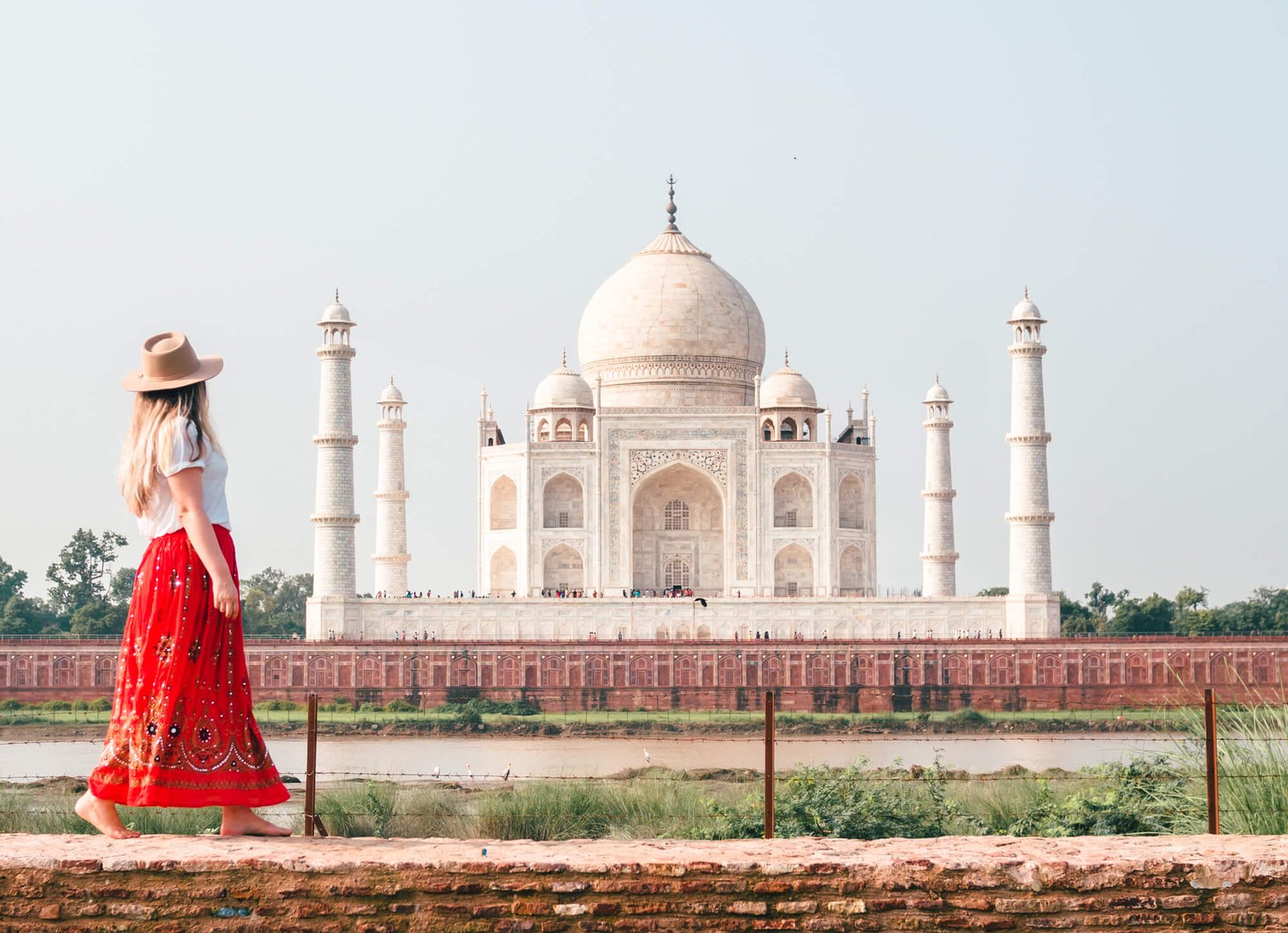




2 Comments
Your comment is awaiting moderation.
Your words have an organic quality. They grow naturally from thought and feeling, creating a texture that is both familiar and surprising.
This work embodies balance. Complexity is tempered with clarity, depth with accessibility, creating a reading experience that is both enriching and inviting.
Thank you